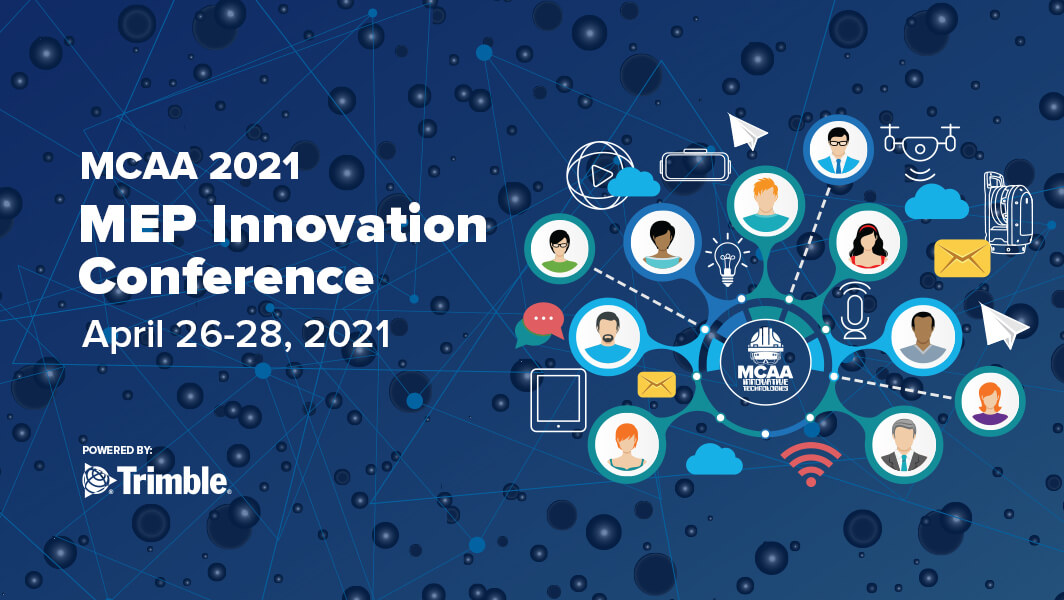
For the last 10 years, there has been a steady rise in the digital integration of the industry. What started with 3D models built with AutoCAD and coordinated in NavisWorks has evolved to the point where digital tools are used on every part of the process and data is collected. That is not to say that prints and paper aren’t found on the jobsites anymore, but to get past the point where contractors are surviving and instead competing takes some level of digital tool use these days. MCAA’s 2021 MEP Innovation Conference is addressing all of these challenges with big and small ideas for every contractor.
Take a look at the building process in general. Estimates are put together with takeoff software and estimating software (including the industry’s favorite, Microsoft Excel). Projects are designed and coordinated with BIM software like Revit using models either developed in house or through services like Sysque. They can be spooled and fabricated using software that incorporates computer workstations and manufacturing equipment in the fabrication facilities. Projects are coordinated using BIM to field platforms that connects information from the design in the office to the build team in the field. They use robotic total stations to identify pinpoint accuracy of placement in the field and verify with 3D scanners or even augmented reality based Microsoft HoloLenses.
All that doesn’t take into account servicing and maintaining the buildings afterwards. More service contractors have gone completely paperless than construction contractors. They incorporate tools like dispatch, accounting, location, and time keeping all on single platforms and drive down their billing cycle to make better cash flow. Having customer data on building systems, contract details and billing information is vital for service contractors to perform their work. Digital integration drives their success almost as much as company culture and training.
The MEP Innovation Conference is showcasing how contractors are transforming their companies by having them demonstrate their processes themselves. Every breakout session at the conference is being led by contractors that are sharing their own case studies and how they are integrating new solutions into their processes.
To learn more, visit the 2021 MEP Innovation Conference website.


